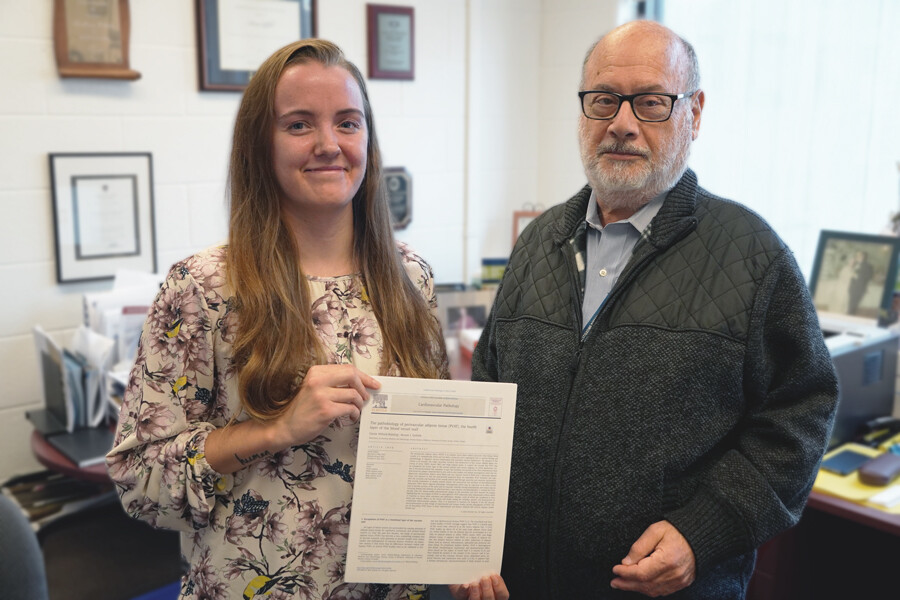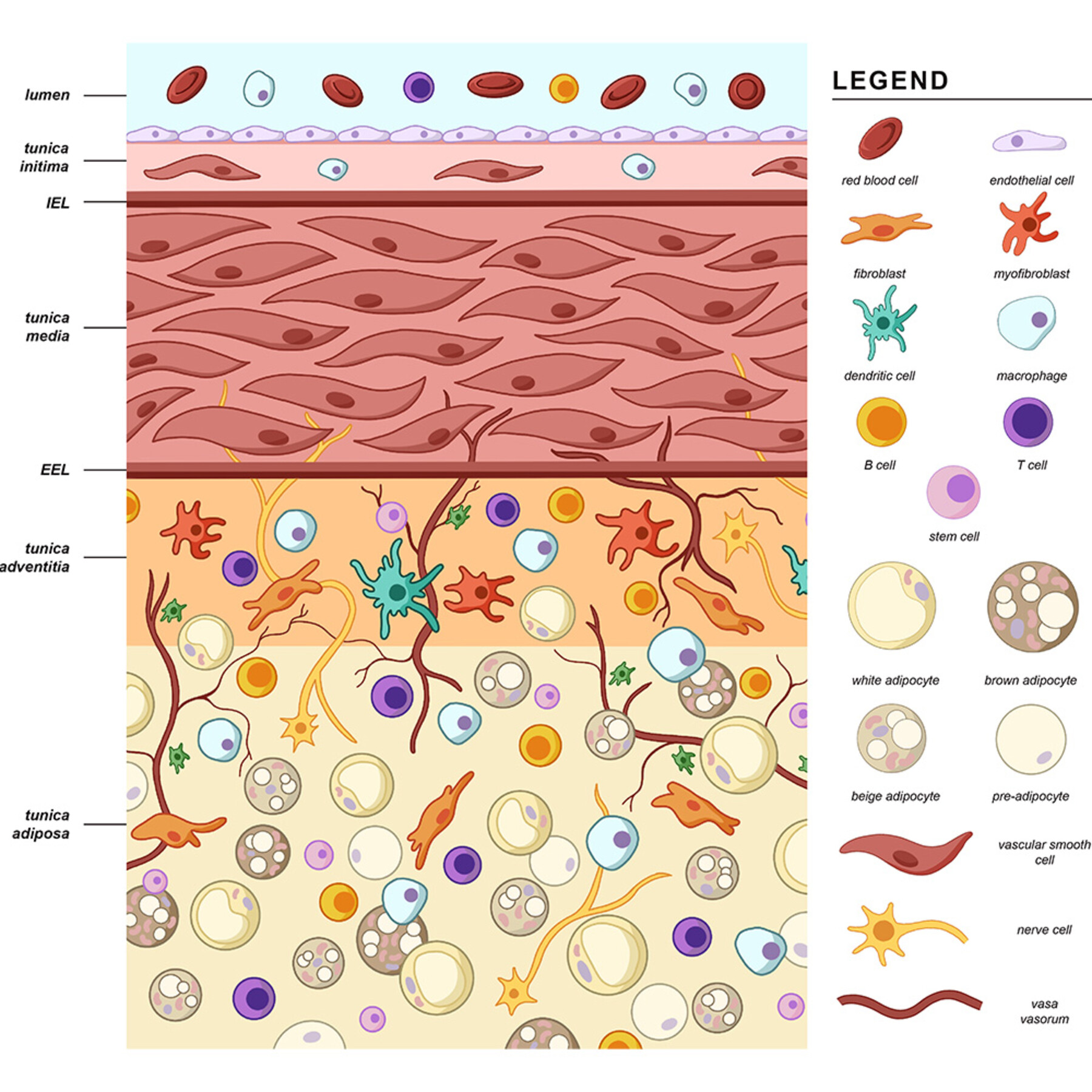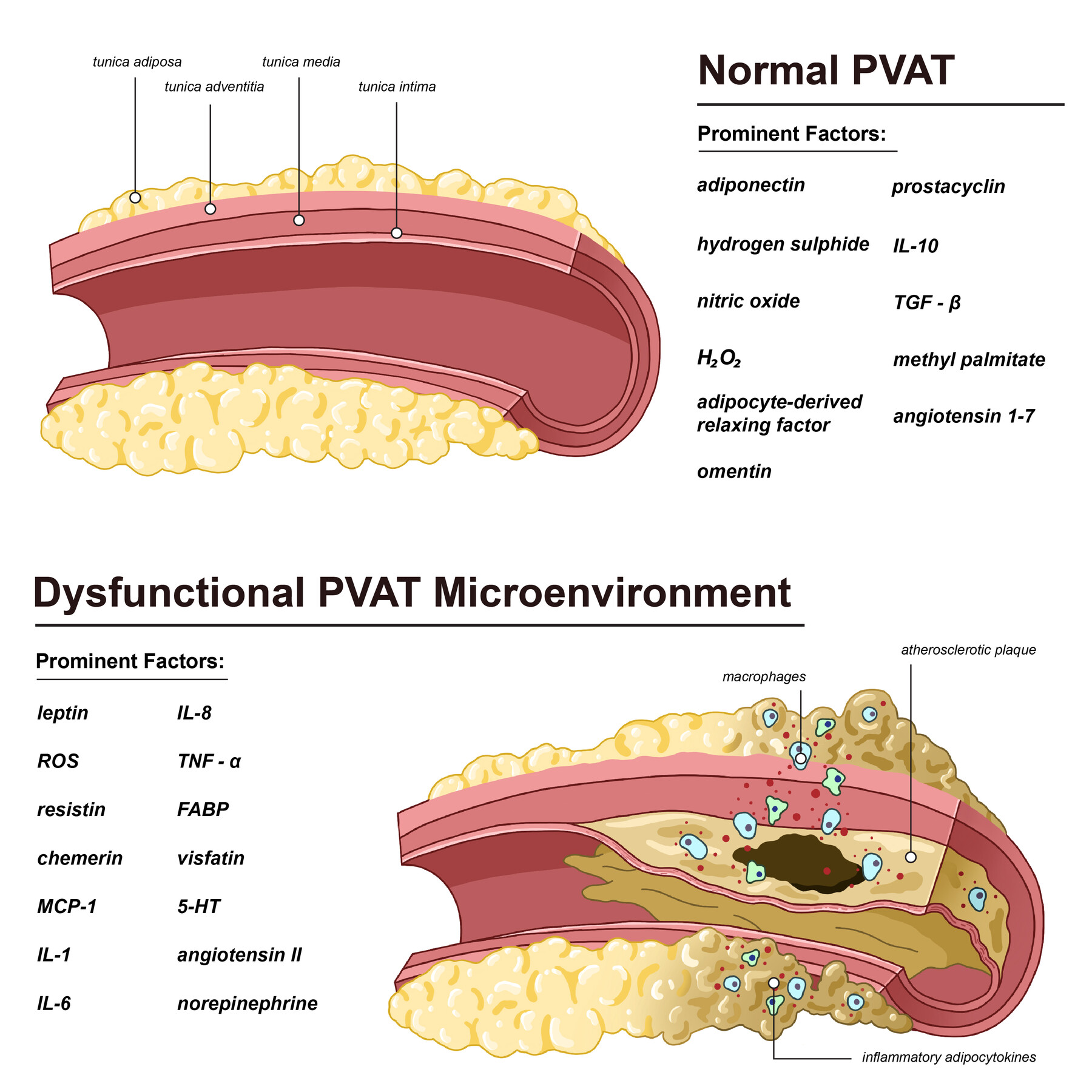
“Being a Pathologists’ Assistant is a hands-on job and sometimes you forget about the science behind it. This program is good at making you think more about research and encouraging you to be curious,” says MHSc in Laboratory Medicine student, Cassie Hillock-Watling. “Looking back at high school or my undergrad, I never would have thought I’d be a published author!”
She had her first scientific paper published in Cardiovascular Pathology with Program Director, Dr. Avrum Gotlieb earlier this year: The pathobiology of perivascular adipose tissue (PVAT), the fourth layer of the blood vessel wall.
Training to be a Pathologists’ Assistant in the two-year professional Master’s program, she has appreciated the strong focus on research the program provides. Gotlieb and Hillock-Watling decided to undertake the paper as she had completed the anatomy course in a different program and wanted to use the opportunity to develop other skills.
In the review article on perivascular adipose tissue (PVAT), they explore the pathobiology of this fatty tissue surrounding blood vessels and concluded that research on PVAT suggested that it could be considered the fourth layer of the normal arterial wall.
Your body contains three main types of fat, also known as adipose tissue: brown fat helps regulate body temperature, stores energy, and helps your body burn calories; white fat stores energy and insulates your organs; and beige fat has features of both types of adipose tissue. You generally find more brown fat in very fit individuals, and white fat in people who are obese.
PVAT is usually beige-type and has a protective role with anti-inflammatory and contractile properties. Obesity, aging, and diabetes can all contribute to PVAT becoming dysfunctional, which in turn promotes vascular disease.
“We wanted to discuss what happens when it becomes dysfunctional or injured and how that might contribute to the formation of atherosclerosis (plaque in the blood vessels),” explains Hillock-Watling.
“I discovered that in many experiments, researchers would strip this layer of fat from the veins or arteries. While that makes them easier to inspect, it removes this vital part of the blood vessel so its role may have been underestimated.”
The process of writing a scientific paper was new to Hillock-Watling but was a valuable learning experience. “It was a lot of work. We would slowly build the draft through editing – we ended up with 22 versions. I learned that it’s important to be organised and add references in the right way so when you change the paper later in the process you don’t have to redo everything!” she laughs.
The process gave her valuable skills in learning how to read a scientific paper in a critical manner and summarize it efficiently, something she says is very useful for her capstone research project which she has just begun.
Having completed a Masters in Biomedical Communication (BMC) before joining the MHSc in Laboratory Medicine, she used her artistic skills to create beautiful illustrations for the paper. “The BMC program was so useful as I had to understand anatomy, how a disease forms and how to communicate it. All skills that gave me a great foundation for the program I am in now.” See some of her diagrams below.
Dr. Gotlieb commented, “We designed our unique graduate program to train clinical laboratory scientists to be able to critically evaluate and understand the scientific underpinnings of what they practice professionally at the pathology laboratory bench. Our reading course offered Cassie an opportunity to carry out an in-depth investigation of an emerging area of atherosclerosis research. She prepared and submitted a manuscript that had a specific point of view on the pathogenesis of a disease that she will engage with in her career as a Pathologists’ Assistant.”
“I hope that learning skills like this will help me remain a lifelong learner and stay up to date with the latest research throughout my career,” says Hillock-Watling.
Sign up to our mailing list to hear more about LMP education
Find out more about the Master of Health Science (MHSc) in Laboratory Medicine
The Master of Science in Biomedical Communications at the University of Toronto

